-

A dumbo octopus in the Abyssal Zone. It is named for its large fins on either side of the top of its head that look like large ears resembling Dumbo the Elephant
-
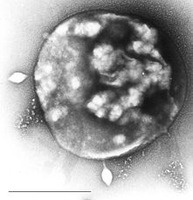
A Sufolobus, a microscopic single-celled chemotrophic producer in the Abyssal Zone
-
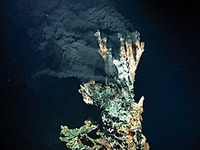
A black smoke hydrothermal vent emits sulfur for chemotrophs to produce energy.
-
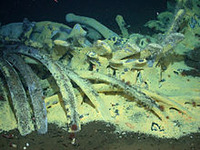
A whale carcass supporting an ecosystem in the Abyssal Zone
-
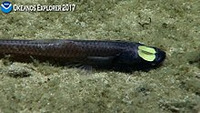
A Grideye Fish at the bottom of the seafloor in the Midnight Zone. The "eyes" of the fish are located at the top of its head where it senses changes in light rather than seeing directly
-

An angler fish in the Midnight Zone. Angler fish use a glowing lure-like pole from the top of their heads to bait in potential prey.
-
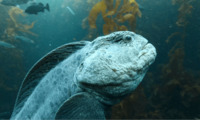
A large stone-like eel in the Twilight Zone. Many animals in the Twilight Zone take advantage of the inconsistent lighting and decreased brightness by camouflaging with their environment
-
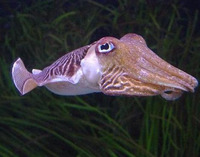
A cuttlefish, a relative of cephalopods like octopi and squid, swimming in the Twilight Zone.
-

A Fiddler Crab pictured in the Midnight Zone. Fiddler crabs have very uneven claw sizes
-
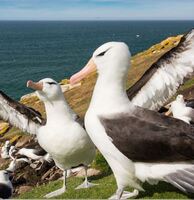
A couple of albatrosses which feed on high-dwelling marine life in the sunlight zone off of the ocean's surface
-

A five limbed starfish living in the Twilight Zone
-
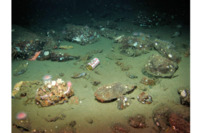
This images portrays the effects of pollution in the hadal zone. 4 billion microfibers per km² of plastic sink below the surface of the ocean and contaminate not just the hadal zone but the entire ocean ecosystem. The presence of waste in the hadal zone can harm hadal organisms which can prevent the recycling of nutrients back into the environment. In other words, human pollution can harm hadal organisms and thus the entire aquatic ecosystem.
-

Striped Cusk-eels adapted to hunting prey in the absence of light by evolving to possess pelvic fins on their chin. By possessing pelvic fins on their chin, cusk-eels can use the sense of feel more to locate invertebrates, crustaceans, and other small bottom-dwelling fishes. As a result the cusk eel acts as a selective pressure to invertebrates, crustaceans, and fishes to prevent the disruption of the ecosystem.
-
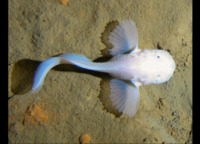
To adapt to the extreme pressure of the hadal zone without a shell, snailfish contain do not contain any air spaces. Instead, hadal snailfish possess gelatinous goo underneath their skin to combat the extreme pressures. As a fish with fins, snailfish possess the capabilities to consume amphipods, decapods, and polychaetas. As a result snailfish act as a selective pressure to regulate the populations of amphipods, decapods, and polychaetas to prevent the disruption of the ecosystem.
-
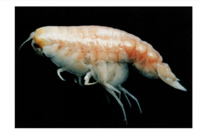
Found in the deepest part of the ocean giant amphipods can reach a size of 141 millimeters with a weight of 45 grams. Amphipods serve the environmental role of decomposers as they recycle dead matter back into the environment to allow other trophic levels to benefit.
-

NOAA Pacific Island Garbage Patch Map















